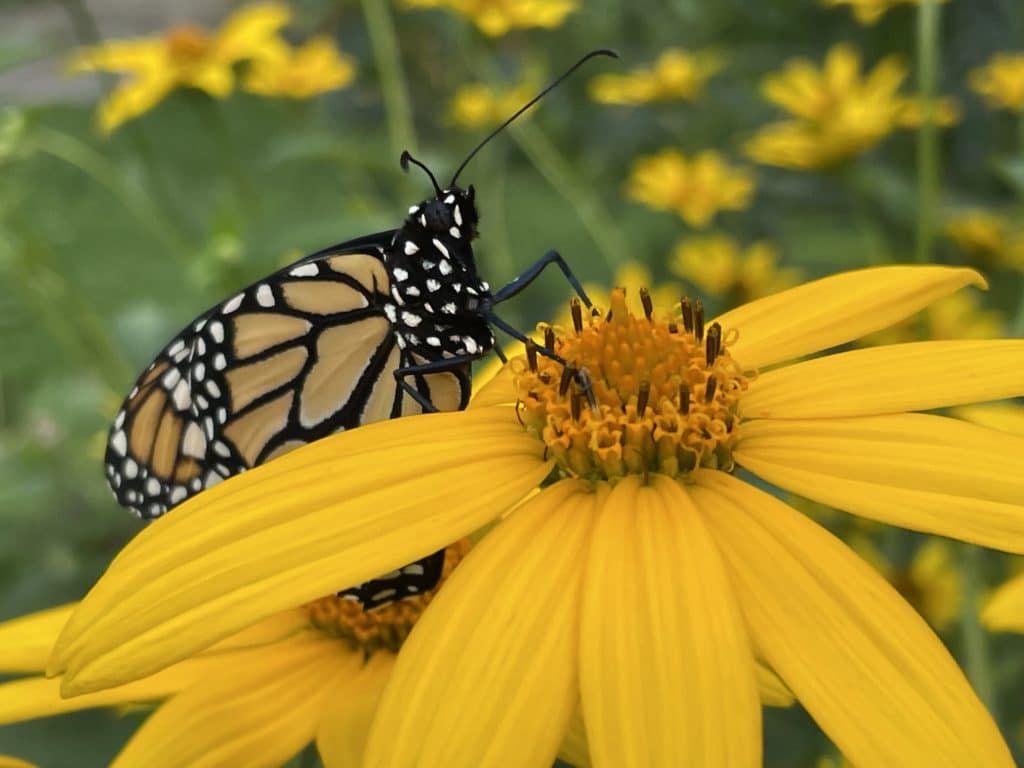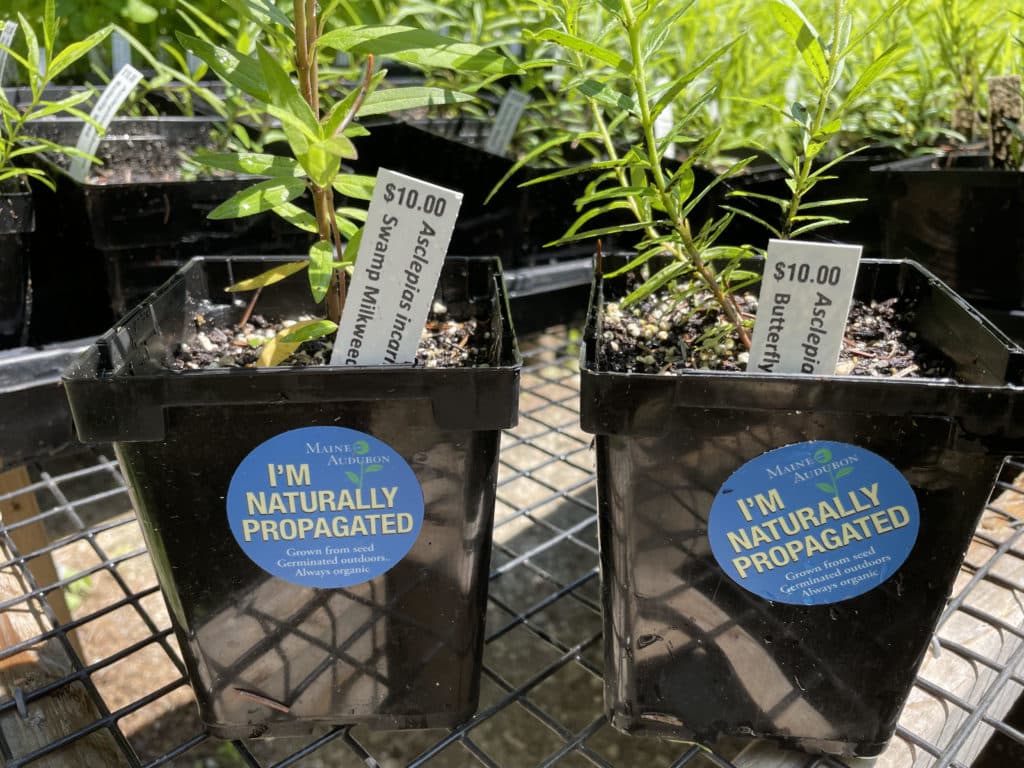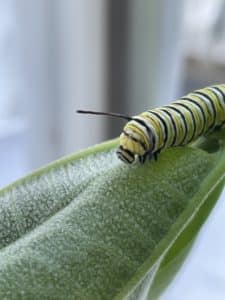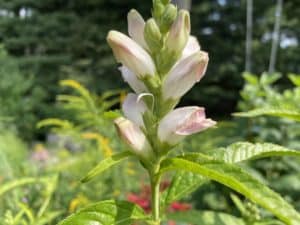
Welcome to the best month for planting in Maine! September offers the perfect combination of cooler nights, high dew points, warm soil, and, typically, more rainfall. Plants that go in the ground this month will have a few weeks to settle, root out a little, and become dormant for winter. Plants planted in early fall also need less help getting going, and often watering them in deeply right when you plant is enough to get them through. As the soil warms next spring, these plants will be far ahead of the same plants that are waking up in pots, even those “forced” to be fully leafed out for May nursery marketing hype.
Maine Audubon has taken advantage of fall planting for years in planning our demonstration projects. Most of these projects can’t be watered easily due to their location and size, so we time their plantings to get the most free help from Mother Nature. While others are “cleaning up” gardens and parks right after Labor Day, you’ll see us and our partners with new plants, tools, and volunteer groups restoring habitat that hopefully will benefit next summer’s baby birds.
For your patch of Maine, Maine Audubon is loaded up for you to join us planting Maine native plants this month. Browse and shop at shop.mainenativeplants.org.
Here are a few highlights and tips:
We’re Naturally Propagated: We have a dozen or so species that we grow from seeds at Gilsland Farm, which are grown from seed, germinated outdoors (over winter), always organic. Nikki Oteyza, Landscape & Gardening Intern, has single-handedly and caringly sown, protected from critters, germinated, divided, labeled, and grown these beautiful and beneficial babies since last November. Look for the “seed grown” tab on our website and “I’m Naturally Propagated” stickers on our pots.

Monarchs and More: Monarch caterpillars need milkweed, and Maine Audubon is still loaded up with seed-grown Butterflyweed and Swamp Milkweed. The butterflies will need nectar from late-bloomers like asters and goldenrods, which will also then later serve as critical seed material for late fall birds like sparrows and finches. Maine Audubon has a few species each of Solidago (goldenrod) and Symphyotrichum (aster), many of which are seed grown. All are hypoallergenic (hay fever from goldenrod is a myth!) and available in less aggressive/spreading varieties.

Stretch Your Own Moisture Tolerance: Speaking of Swamp Milkweed, did you know that the soil in your pots, garden, and yard is likely better at retaining moisture than many natural soils? So, species like our favorite non-spreading milkweed can thrive far beyond the confines of their namesake habitats. Lobelia, turtlehead (pictured below), irises, Liatris, and other wetland species all thrive in developed landscapes that aren’t necessarily high and dry. If you have a spot that is low and/or has particularly rich soil, try a species or two that skews slightly more moist than you have been. You may discover conditions for a mini wetland like this one in a not-exactly-moist/wet spot in Portland.

Plant a Tree: Celebrate back to school, commemorate the pandemic, replace a shrub that seems past its prime, start a time lapse photo project, connect with traditional ecological knowledge, help an endangered species, rewild your community—these are all great reasons to plant a tree, and are real-world examples we hear everyday from people buying trees and shrubs from us. This fall, it’s your turn.
Members-Only Sale: If you are already a Maine Audubon member, watch your email. If you aren’t, now is a good time to renew or join us. That’s because Maine Audubon members will be offered a 20% discount on herbaceous plants (perennials) later this month. That’s the same discount we offer to our partners such as City of Portland, City of South Portland, University of Maine Cooperative Extension, and Maine State Parks.
While it’s hard to know what else this fall will bring for our schools, offices, families, and communities, restoring ecology around us wherever we can will help both wildlife and ourselves get through it. Plant a native plant or three this fall, and see for yourself . . .
